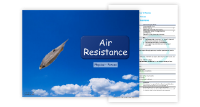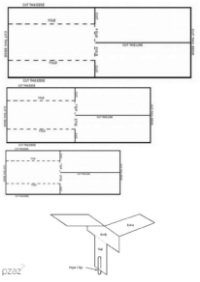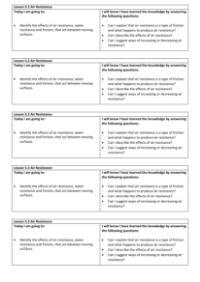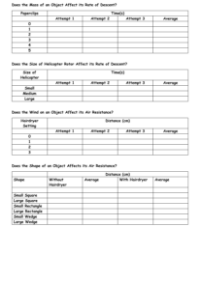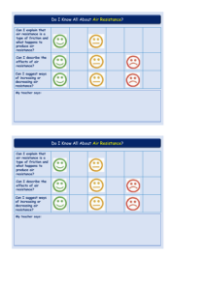Air Resistance - Lesson Plan
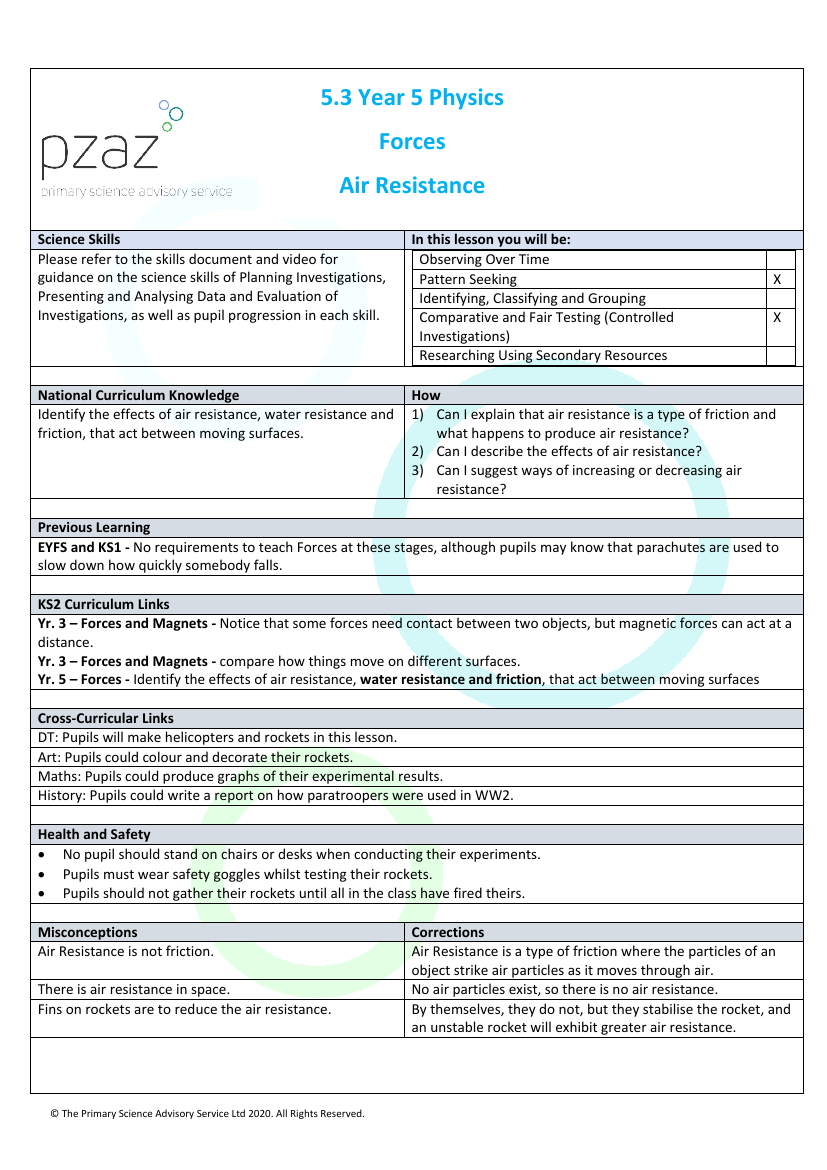
Science Resource Description
This lesson plan from The Primary Science Advisory Service Ltd is designed to help Year 5 students understand the concept of air resistance and its effects. The session incorporates various scientific skills, such as pattern seeking and comparative testing, to explore how air resistance acts between moving surfaces. Pupils will delve into the National Curriculum knowledge of forces, examining air resistance as a type of friction and suggesting ways to modify it. The lesson builds on previous knowledge from earlier stages where students may have learned about forces indirectly, such as the use of parachutes to slow descent. Cross-curricular links are made with design and technology, art, maths, and history, providing a rich, integrated educational experience.
During the lesson, students will engage in hands-on activities, including 'Save The Egg!' and 'Helicopters', which involve constructing parachutes and helicopters to investigate air resistance. They will also explore wind tunnel testing with balloon cars to understand how shape and surface area affect air resistance. The lesson emphasizes health and safety, ensuring no student stands on furniture and all wear safety goggles during experiments. Misconceptions about air resistance are addressed, such as the notion that it does not exist in space. The lesson culminates with a plenary session, where pupils reflect on their learning outcomes regarding air resistance and its manipulation. Throughout the lesson, the importance of air resistance in various contexts, such as vehicle design and parachute functionality, is highlighted.

